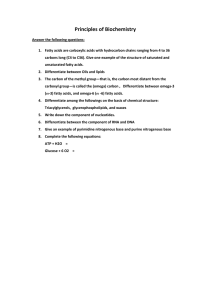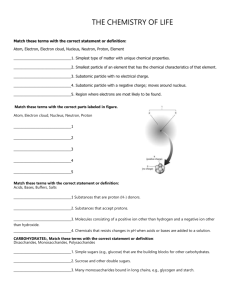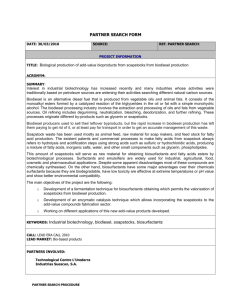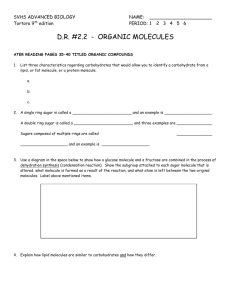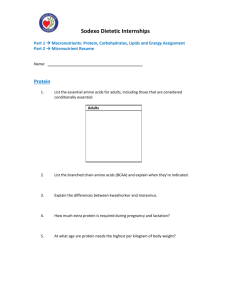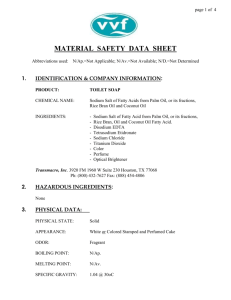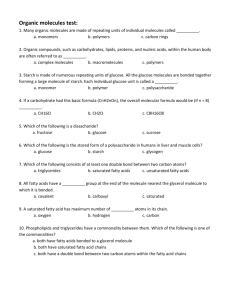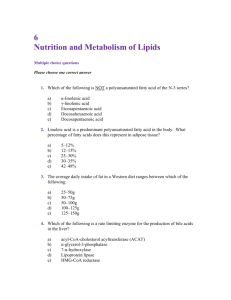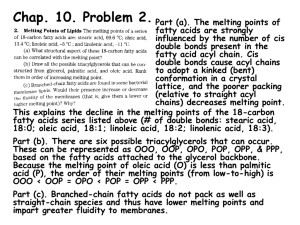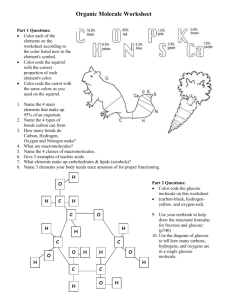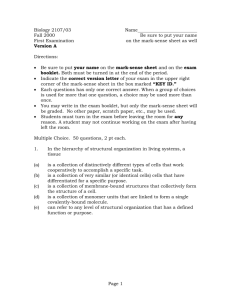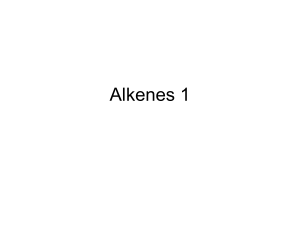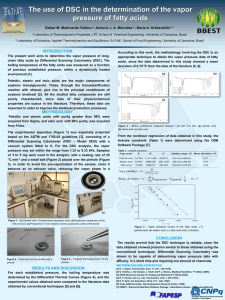Gas Chromatography
advertisement
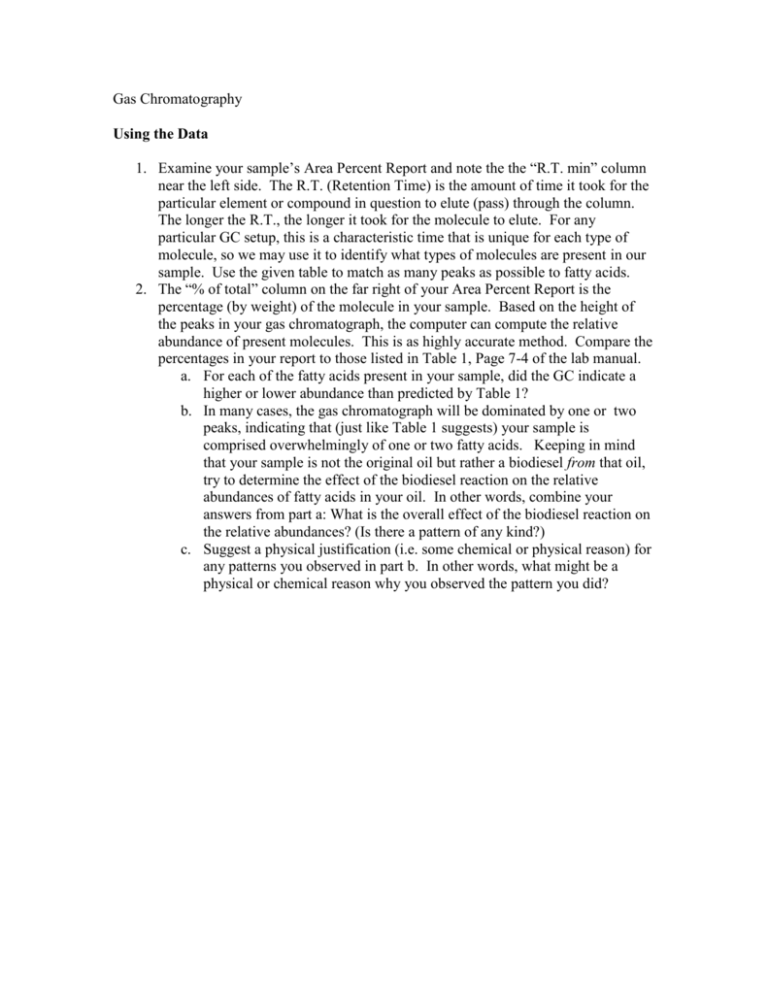
Gas Chromatography Using the Data 1. Examine your sample’s Area Percent Report and note the the “R.T. min” column near the left side. The R.T. (Retention Time) is the amount of time it took for the particular element or compound in question to elute (pass) through the column. The longer the R.T., the longer it took for the molecule to elute. For any particular GC setup, this is a characteristic time that is unique for each type of molecule, so we may use it to identify what types of molecules are present in our sample. Use the given table to match as many peaks as possible to fatty acids. 2. The “% of total” column on the far right of your Area Percent Report is the percentage (by weight) of the molecule in your sample. Based on the height of the peaks in your gas chromatograph, the computer can compute the relative abundance of present molecules. This is as highly accurate method. Compare the percentages in your report to those listed in Table 1, Page 7-4 of the lab manual. a. For each of the fatty acids present in your sample, did the GC indicate a higher or lower abundance than predicted by Table 1? b. In many cases, the gas chromatograph will be dominated by one or two peaks, indicating that (just like Table 1 suggests) your sample is comprised overwhelmingly of one or two fatty acids. Keeping in mind that your sample is not the original oil but rather a biodiesel from that oil, try to determine the effect of the biodiesel reaction on the relative abundances of fatty acids in your oil. In other words, combine your answers from part a: What is the overall effect of the biodiesel reaction on the relative abundances? (Is there a pattern of any kind?) c. Suggest a physical justification (i.e. some chemical or physical reason) for any patterns you observed in part b. In other words, what might be a physical or chemical reason why you observed the pattern you did?

